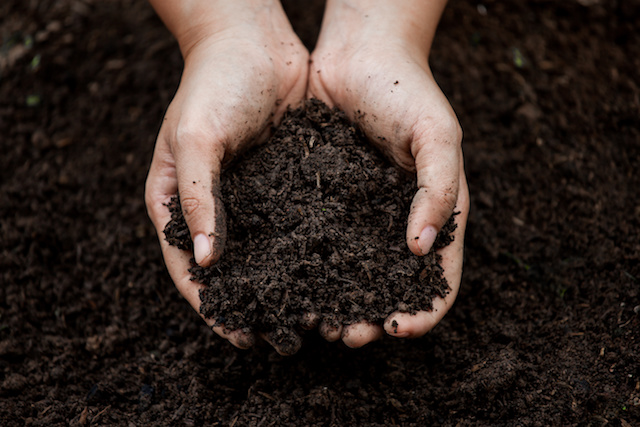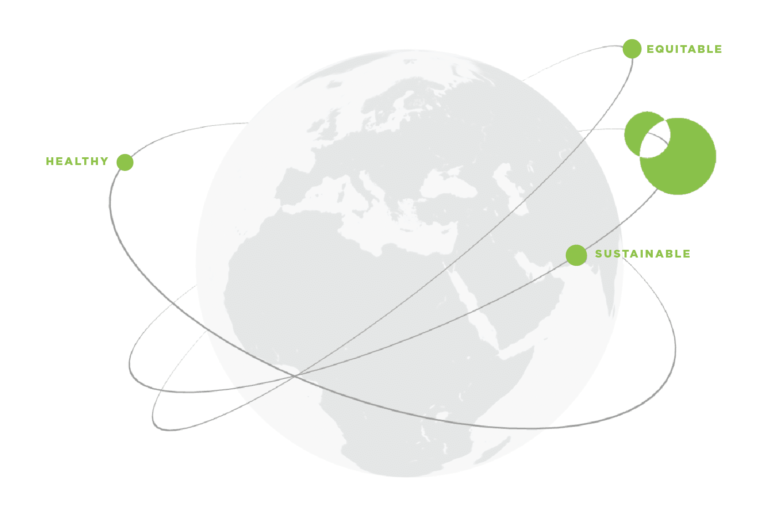Food Tech Connect: Our Dirty Secret: Soil is on the Endangered List
by Victor Friedberg | October 3, 2018
There was a time, prior to the 20th century, when agricultural soil was rich, healthy and organically dense. Soil, in all of its regional variations, had always been a deeply complex ecosystem of microbes, minerals, decomposing organic matter, air and water. Our agricultural society was built upon it.
Following two World Wars and the Great Depression, modern agriculture – with its reliance on mechanization, synthetic fertilizers, and the pursuit of ever higher yields – was widely adopted with the goal of achieving global food security. While modern agriculture was successful at increasing yields, and thus food security, its use of chemicals to fight weeds and pests severely degraded soil health. Industrial agriculture literally treats soil like dirt – a at an alarming rate. If current trends continue, soil as we know it (or more importantly, as we need it) will be gone by the year 2050.
“We know more about the movement of the celestial bodies then we do of the soil underfoot.” Leonardo DaVinci said that in 1500, and this still holds true today.
In 2050, at least 10 billion people inhabit our planet. Yes, there will be advances and scaling of controlled environment agriculture, which will play an increasing important role in food security. But any future that includes 10 billion people eating healthily, sustainably and equitably will require soil – healthy soil. To meet this challenge, we have to start now.
Soil is at the nexus of agriculture and climate change. Ten million hectares of cropland are lost annually because of soil erosion, which is the equivalent of 30 football fields per minute. For every .1 meter of soil eroded, yields are reduced 4 percent, and there is a 10 percent loss of yields for every one degree rise in temperature. We burn 10 calories of fossil fuel for every single edible calorie. This is not sustainable.
Soil is also the nexus between agriculture, climate change and nutrition. In 2050, when population growth is estimated to grow to 10 billion and CO2 concentrations are expected to reach 550ppm, nutritional levels of protein, iron and zinc in staple crops such as wheat and rice will be lowered by as much as 17 percent. This will leave 2 billion people deficient in at least one or more essential nutrients, while 1.4 billion women of childbearing age and children under 5 will be at high risk of iron deficiency, 122 million people will be protein deficient, and 175 million people will become zinc deficient.
These are staggering numbers with profound future implications for human health, food security and geo-political security. We need significant resources and talent to spur the innovations that are needed to tackle these challenges.
FoodShot Global: A New Investment Model For a Better Food Future
Earlier this month, I launched FoodShot Global, a new nonprofit investment organization dedicated to transforming the food system into one that is healthier, more sustainable, and more equitable. For us, science, technology, innovation and investment are the keys.
Our first mandate is to solve big, global-scale problems. Our second mandate is to do this through collaboration, since no one fund, bank, foundation, university, corporation, non-profit or NGO alone can make the transformational changes that we need. As such we’ve brought together a consortium of world class Founding Partners, including Rabobank, Generation Investment Management, MARS, UC Davis’s Innovation Institute for Food and Health, The Rockefeller Foundation, The Builders Initiative, Armonia and the Stone Barns Center for Food and Agriculture. We have also partnered with a number of Resource Partners, including The Nature Conservancy, The Foundation for Food and Agriculture Research, The Path Foundation, and The Soil Health Institute. And our third mandate is to look to longer horizons and to align prize dollars, equity, and debt across a capital continuum.
We want to empower visionary entrepreneurs and change agents, and that takes time and resources. On the early side of our capital continuum, FSG has established the GroundBreaker Prize, a $525,000 award to groundbreaking rising stars in research, social enterprise and public policy/advocacy. The GroundBreaker Prize is the largest prize in food and agriculture. Further down the capital continuum, FoodShot Global has aggregated up to $10 million for equity investments and up to $10 million a year in debt.
Investing in a Healthier Soil Future
For our inaugural year, we are focusing on soil, because healthy soil is critical to the future of food and is an area ripe for research and discovery.
Solving the challenges around soil will not come down to a single solution – we need a collaborative effort that unites disparate disciplines and technologies into a new soil operating system — Soil 3.0.
Achieving the new soil operating system will take several steps. First, we need technology that allows us to observe and build global data sets for soil at the finest levels of detail. This means investing in sensing and imaging technologies that can give us new insights into what’s happening beneath the earth’s surface and tapping into the latest developments in robotics solutions to create autonomous equipment that can take samples, manipulate seeds and crops, and maintain conditions like soil humidity and pH levels without constant human input.
Second, we need to tap the very latest in biology, science and chemistry to understand soil itself – its organic material, mineral content and the chemical exchanges between the microbes and the plant. It’s not enough to understand the soil microbiome – we also need insight into the phytobiome and the interdependent ecosystems surrounding the plant. Presently, we know mostly what these phytobiomes are, but we don’t truly know what they do.
For exploration: Is it possible, for instance, to breed plants that have a lower impact on the degradation of organic matter in soil? Or even cultivate plants which have a regenerative effect on soil as part of their growth process? Are there microorganisms or inoculants that can catalyze soil regeneration?
Finally, all of this work will generate unprecedented data on how soil works. We’ll need new solutions in data analysis, predictive modeling and visualization to parse this deluge of information and obtain workable intelligence about the most promising areas for action and study.
Even more exciting is the promise of the ideas yet to come, which may hold the key to growing healthier, more resilient and more sustainable food. Somewhere in a lab or a garage in Singapore, Delhi, Nairobi, Brooklyn, or Vancouver, there is a scientist or technologist with an inspired but nascent idea that will be a breakthrough contribution to this integrated approach. We want to find them. We want to fund them. We want to look deeper into the soil and deeper into the future to make sure we realize a better one.

